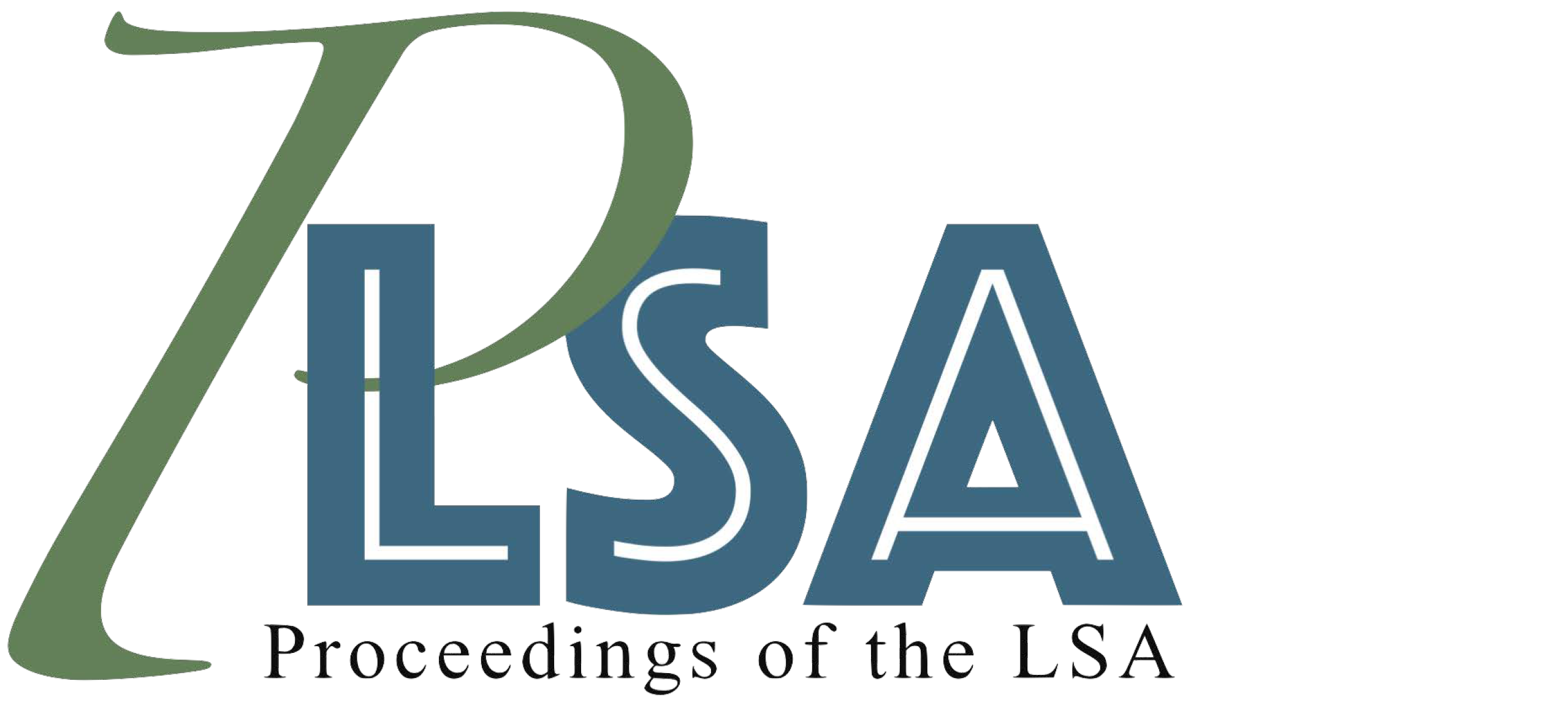Orthographic effects on vowel contrast in language acquisition
DOI:
https://doi.org/10.3765/plsa.v10i1.5930Keywords:
L2 acquisition, orthography, acoustic phonetics, phonology, Turkish, KoreanAbstract
This study measures whether differing letter shapes affect the production of /ɯ/ for L1-English learners of Turkish or Korean, which use a Latin-based and featural alphabetic orthography, respectively. Native speakers and L1 English learners of Turkish and Korean were recorded reading word lists and performing a picture-naming task in their target languages to compare whether read speech is significantly different from more naturalistic speech. Acoustic analysis of the high vowels /i, ɯ, u/ (n=1056) reveals that visual similarity between Turkish <ı> and <i> causes /ɯ/ to move towards the front of the vowel space, suggesting these letters’ vertical line shape is interpreted as [+front]. The visual similarity of Korean /ɯ/~<으>, /u/~<우> and /o/~<오> results in learners analyzing /ɯ/ as having an intermediary vowel height between /u/ and /o/ rather than being contrastive via the [±round] feature. These findings demonstrate that speech production models must account for visual input, highlighting the need for further multimodal linguistic research in language acquisition.
Downloads
Published
Issue
Section
License
Copyright (c) 2025 Julian Vargo

This work is licensed under a Creative Commons Attribution 4.0 International License.
Published by the LSA with permission of the author(s) under a CC BY 4.0 license.
